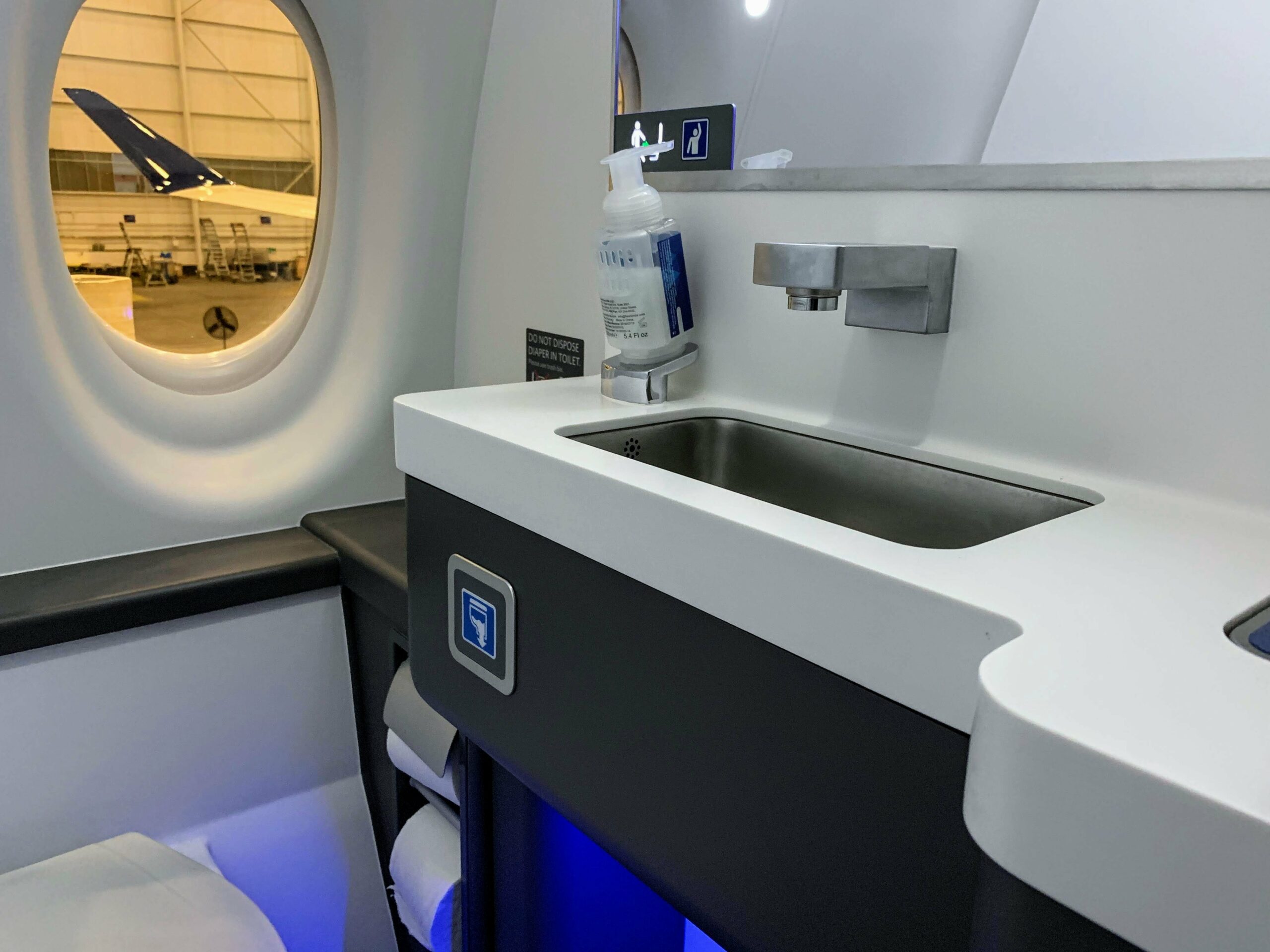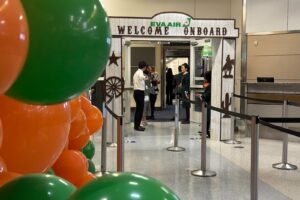A modern airliner is a complex piece of machinery. Fitted with sophisticated navigation equipment, it can take off in near zero visibility and climb to altitudes seven miles above the ground. It hurtles through the sky at 600 mph in an atmosphere where the temperature can drop to as low as -94°F (-70°C), while maintaining comfortable conditions for the passengers inside.
As the aircraft nears its destination, the pilots are able to guide their way down toward a runway just 148 feet (45 meters) wide, landing safely in even the worst weather conditions. However, the flight deck isn’t the only place where there is a wealth of technical equipment designed to keep all on board safe.
At first glance, the cabin of an aircraft may seem to be made up only of rows and rows of seats, overhead lockers and a few galleys where the flight attendants prepare the food. Yet, hidden out of sight are a number of safety features — from fire extinguishers and smoke masks to survival equipment and portable oxygen.
In This Post
Firefighting equipment
You may think that your flight attendants are on board to keep you fed and supplied with drinks for the entire flight. This is part of their role. However, the main reason for their presence is to manage any emergencies that may occur in the cabin that the pilots cannot deal with themselves. For example, flight attendants are trained to deal with any fires in the cabin.
All modern aircraft also feature a wealth of fire detection and firefighting equipment to help the crew deal with this potential danger.
Smoke detectors
Each airplane restroom is fitted with a smoke detector in the ceiling, as well as a heat detector in the waste bin compartment. Should smoke be detected in the cubicle, or heat sensed in the bin, the system activates alarms in both the cabin and the flight deck.
Upon hearing the alarm, flight attendants must immediately check out the situation and take any appropriate action as per their training.
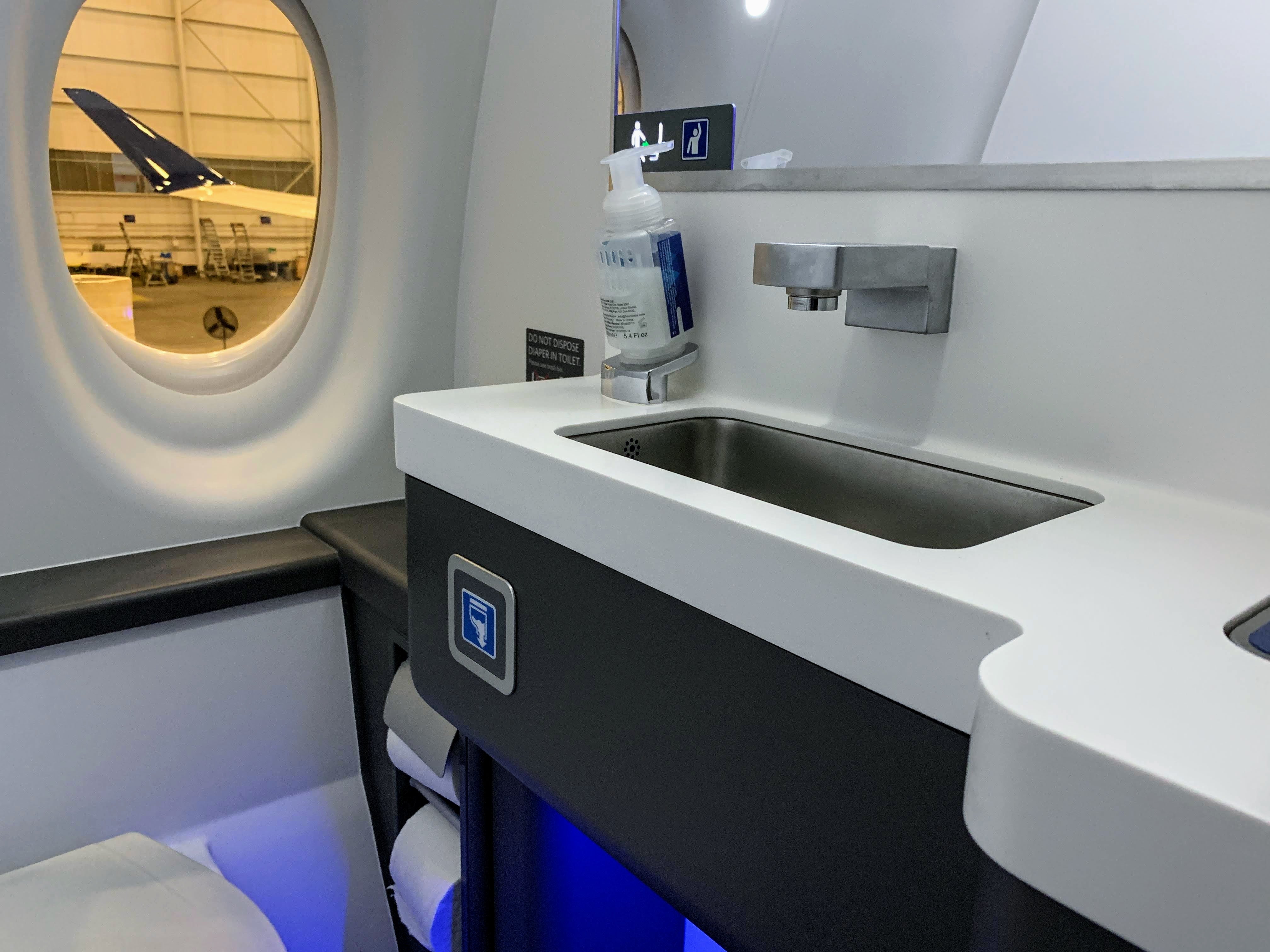
The smoke-detection system is so sensitive that sometimes, should the toilet door be opened at the same time as an oven in the galley, the steam from the oven can trigger the smoke detection system. Even though this false alarm may get the heart rate going, it’s good to know that the system is sensitive enough to detect even the smallest traces of smoke.
Fire extinguishers
If a fire breaks out in the cabin, the flight attendants must deal with it without delay. As a result, a number of fire extinguishers are stored at various locations around the aircraft. This means that no matter where the fire is situated, the closest fire extinguisher is never far away.
If more are needed, other crew members can quickly collect them and bring them to the site of the incident.
Smoke hoods and fire gloves
Other threats when it comes to fire are smoke inhalation and the heat generated by the fire. It’s no good giving a crew member a fire extinguisher if they can’t get close enough to the fire to deal with it. As a result, normally under or in the area around each crew seat is a smoke hood and a pair of fireproof gloves.
The smoke hood is stored in a quick-access box, meaning that the crew member can grab it and put the hood on in a matter of seconds. Once on, the hood provides full respiratory protection, preventing smoke from entering the hood, and supplies a constant flow of oxygen into the mask.
The fire gloves allow the crew member to get the extinguisher close to the fire, without burning their hands.
Onboard wheelchair
Many flights may have a number of passengers with reduced mobility. Passengers with the least mobility will normally bring their own wheelchair to the aircraft door, at which point they face a problem: Most personal chairs are too wide to fit down the narrow aircraft aisles. To get the passenger to their seat, most larger aircraft have a special onboard wheelchair that the passenger can use.
The wheelchair can also be used during the flight, allowing the passenger to get to and from the bathroom when they need to use it.
Related: 7 air travel tips for wheelchair users
Stowage latches
If you sit near a galley during a flight, you’ll no doubt hear a near-constant clicking and snapping sound for the duration of your journey, particularly around the time when the crew gets ready for takeoff and landing, or prepares the meals and drinks service. What are these odd noises?
The galley of an aircraft is as close to a fully functioning restaurant kitchen as you can get seven miles above the ground. Yet, it would be extremely dangerous without some of the exceptional features designed to address the dynamic nature of the aircraft: In other words, this kitchen is constantly moving, and so is everything in it.
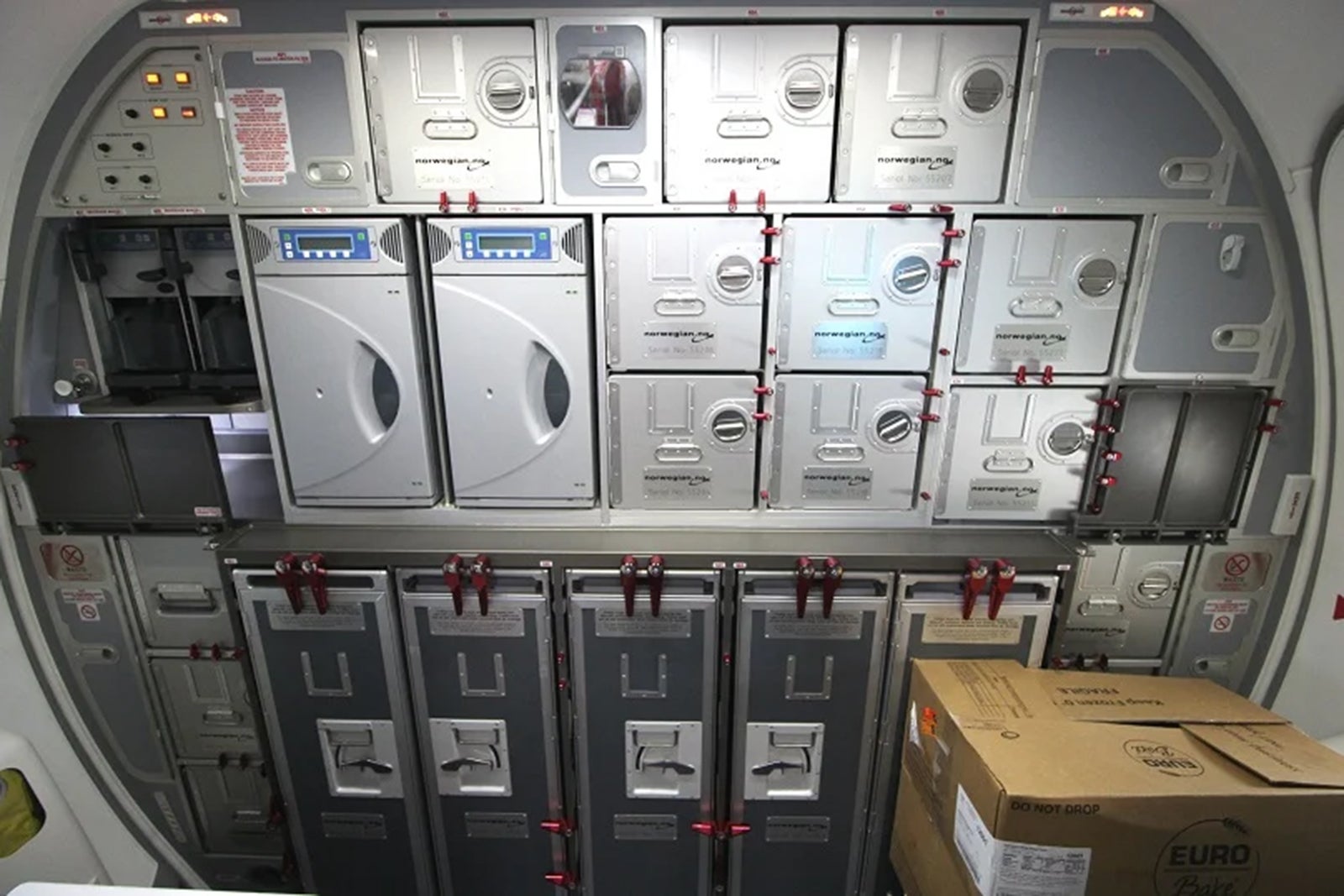
The carts and boxes that flight attendants are constantly snapping open or closed are used to store all the food, drink, plates, glasses and other sundries for hundreds of passengers for the duration of a flight. These items, and the storage boxes, are heavy. If they were to come loose during takeoff, landing or turbulence, they could inflict serious injury.
Because of this, all stowages on the aircraft have some form of latch or lock to ensure that any stowed box, cart or any other item stays firmly in position, no matter how rough the ride gets. The default position for all latches on the aircraft is the locked position as turbulence could strike at any time.
This means that any time the crew needs access to these stowages, they must unlock the latches, remove the cart or item that they need and then relock the latches. It may be noisy and distracting but it ensures that the risk of injury to crew or passengers is kept to a minimum at all times.
Circuit breakers
Fire is a hazard in the galley as well as the cabin, so there are only a few items in the galley with electrical power. These include the ovens and brewers for heating meals and making hot drinks, and the chillers that keep the food and beverage carts and their contents cold, even on long-haul flights.
Should any of these items malfunction or the crew sense that there is smoke or a fire, the first course of action is to remove the power from the appliance. All the equipment is wired into the aircraft’s electrical supply, so there is no plug to pull out.
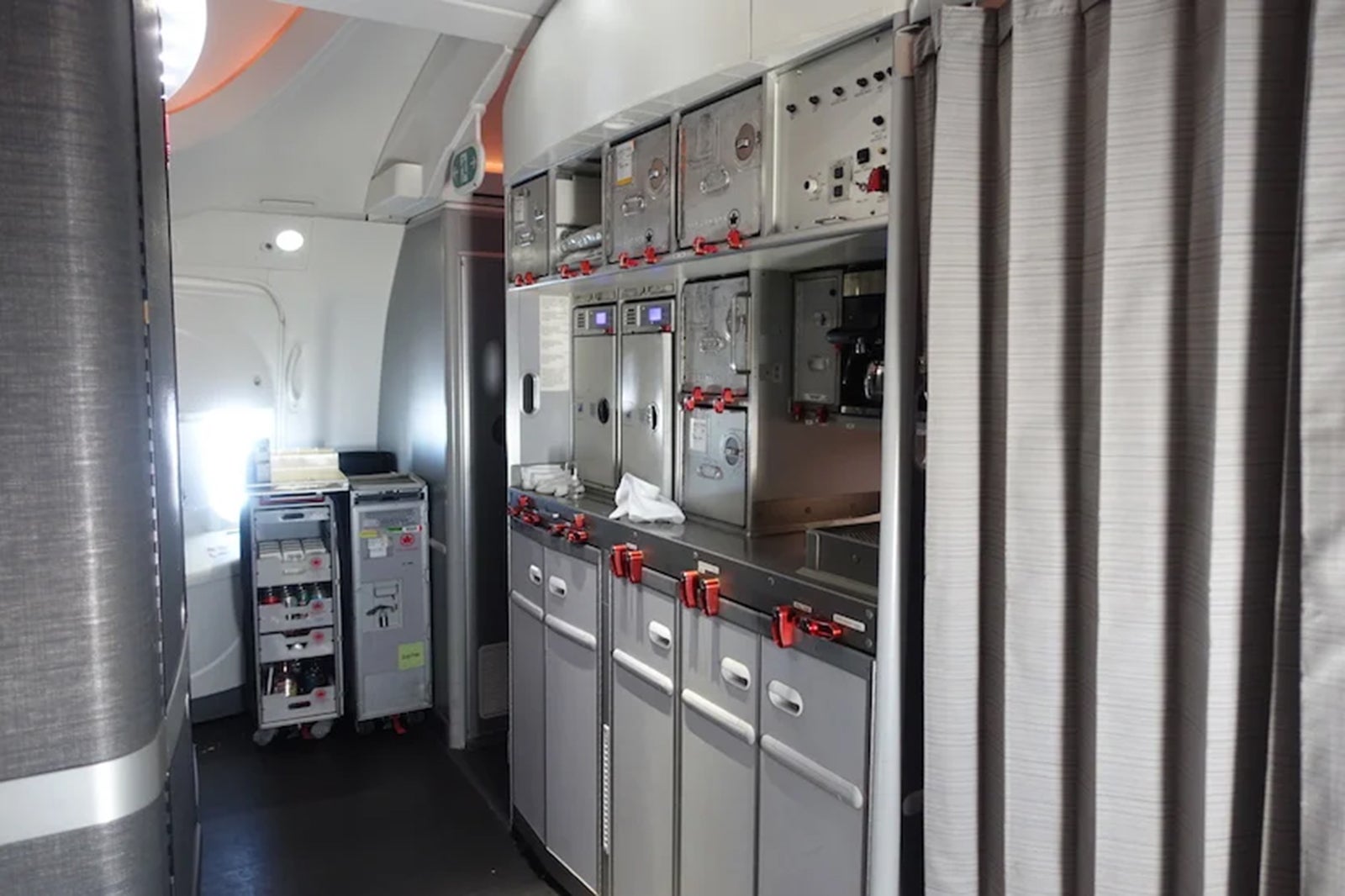
Instead, there is an electrical panel located in the galley that contains an electrical master switch for all the appliances and a number of circuit breakers. Turning off this switch and pulling the circuit breakers cuts electrical power to the equipment, removing a likely source of the fire.
Taking these actions is fully reversible, so should it be a false alarm, the crew can always turn them back on and return to the service. It’s better to be safe than sorry.
Related: How aircraft generate electricity and what happens if it fails during flight
Cabin partitions and dividers
Have you ever seen your crew messing about with the partition between cabins before takeoff and landing and wondered what was going on? If you weren’t paying close attention, you may not have even noticed at all.
Every single request the crew makes of you before these critical stages of flight is there for your safety. Ensuring that your bag is under the seat in front, that your seat is upright and your tray table is folded away are all done to allow a quick escape from your seat (particularly the person in the window seat) in case of an emergency.
Cabin partitions are there to divide up the aircraft into different sections when there is no solid feature like a toilet or galley. If this divider comes in an area between sets of aircraft doors, it is important that those behind the divider have a clear view of the space in front of them up to the next exit door.
This is done so that, once again, in the case of an emergency, passengers and crew have a clear view of the whole cabin and can see if there is smoke or another issue beyond the partition.
These partitions, though seemingly solid, actually have a large section in the middle that can be opened, creating a large window and giving those sitting behind it a good view into the cabin in front.
Defibrillator
When you’re seven miles above the ocean, you’re a long way from urgent medical care. For this reason, flight attendants are trained in advanced first aid, including use of the defibrillator that is located on all American aircraft.
Should a passenger be unfortunate enough to suffer a heart attack during a flight, the crew is trained to use the defibrillator, providing vital care that may make the difference between life and death.
Portable oxygen
“If the aircraft should experience a loss of cabin pressurization, pull an oxygen mask toward you and breathe normally.”
This phrase may be second nature to most regular flyers. However, in the event of this happening, what do the flight attendants do?
On the first sign of masks dropping down in the cabin, the crew must stop what they are doing and immediately grab a mask. Even if every seat is taken, aircraft manufacturers have thought of this and every other row has an extra mask, which ensures that there’s always an available mask nearby.
However, if the loss of pressurization occurs over high terrain, it may be some time until everyone is able to take off their masks. In the meantime, the crew may have to move around the cabin to tend to passengers.
To enable them to do so, fire extinguishers and portable oxygen bottles are stored at various locations around the aircraft. Should the crew need to move around the cabin, they can take one of these bottles, sling it over their shoulder, fit the attached mask to their face and continue to care for their passengers.
The portable oxygen bottles can also be used if a passenger becomes unwell at any stage of the flight. Sometimes, particularly for elderly passengers, airplane travel can become a little too much. A few minutes of breathing 100% oxygen from one of these portable oxygen units may be enough to have them feeling normal again.
Related: 6 aircraft systems that help pilots keep you safe in an emergency
Restraint kits
Sadly, since a return to mass flying post-COVID, many airlines have seen an increase in disruptive passenger events on board their flights.
Being stuck in a small metal tube while one person causes chaos isn’t safe for anyone. If the crew can’t calm the passenger down and they consider the disruptive passenger a threat to those around them or the aircraft itself, the captain can authorize the use of a restraint kit.

The process differs from airline to airline but usually consists of a form of handcuffs that flight attendants are trained to use to safely restrain the disruptive passenger and keep them in their seat until the aircraft lands and they can be handed over to the police.
Bottom line
Even though you may book your flight based on the quality of the inflight food or the comfort of the seats, all of those amenities are secondary to the safety features of the aircraft. Whether it’s fire detection, firefighting equipment or circuit breakers, there are a number of systems in place to ensure that fire never becomes a serious threat to the aircraft.
Even seemingly insignificant things such as latches and locks ensure that the heavy carts in the galley don’t get loose during bad weather and injure people. For those with reduced mobility, there is even a special wheelchair kept on board the aircraft to help them get around the aircraft when they need to.
Comfort is always nice to have on long flights, but safety will always be the number one priority.

